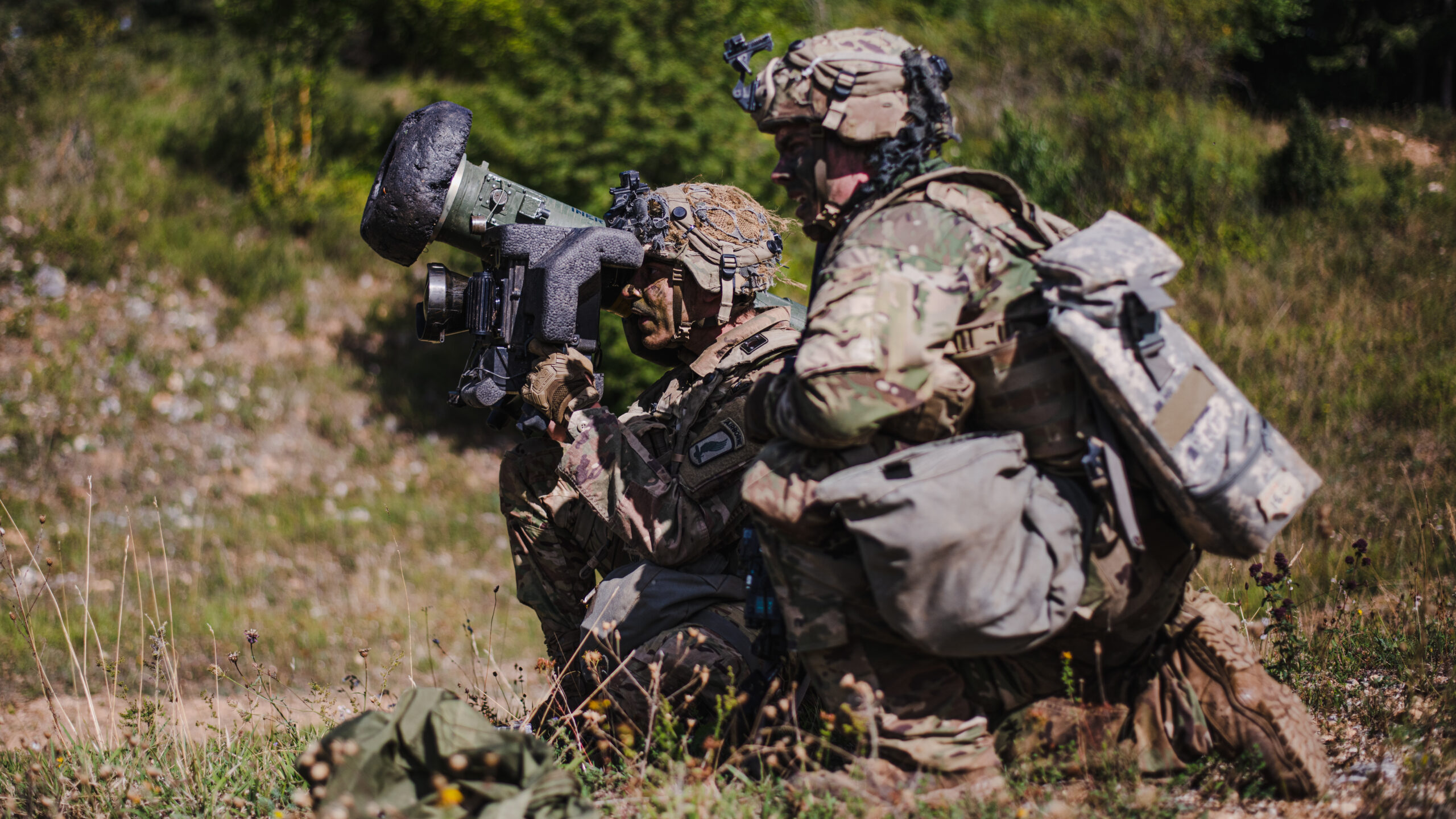
U.S. Army paratroopers assigned to 2nd Battalion, 503rd Parachute Infantry Regiment, 173rd Airborne Brigade prepare to fire an FMG-148 Javelin at a BMP-2M tank during a simulated urban engagement Aug. 20, 2020 as part of Exercise Saber Junction 20. (US Army/Sgt. John Yountz)
WASHINGTON: The Pentagon has awarded a Lockheed Martin-Raytheon joint venture $309 million in contracts for the Javelin program, funding a total of 1,300 anti-tank missiles that will backfill US stocks that have been provided to the Ukrainian military, the companies announced today.
In addition to the Javelin systems meant to replace those sent to Ukraine, the two contracts — a $238 million deal announced on May 6 and a $71 million award from May 12 — also include orders for international customers including Norway, Albania, Latvia and Thailand, the Lockheed-Raytheon joint venture said in a statement.
The United States has provided more than 5,500 Javelin shoulder-mounted anti-armor systems since the beginning of the Biden administration, with most deliveries occurring after Russian forces invaded Ukraine on Feb 24.
Lawmakers have put pressure on Pentagon leaders to ensure that it can recoup the weaponry it has provided to Ukraine, specifically its stocks of Javelins and Raytheon’s Stinger man-portable anti-aircraft systems. On May 6, Pentagon acquisition chief Bill LaPlante told reporters that a Javelin contract was “imminent,” with a Stinger award expected by the end of May.
Lockheed CEO Jim Taiclet told CBS News earlier this month that Lockheed hopes to ramp up Javelin production from 2,100 to 4,000 units per year. However, the contract announcement contained few details on whether funds from these awards will give Lockheed the money it needs to begin expanding its production facilities and purchasing additional materiel from suppliers.
“The Javelin Joint Venture is working hard to meet this increase in demand,” Dave Pantano, who manages the Javelin program on behalf of Lockheed, said in a news release. “Javelin’s unique capabilities have proven to be a difference-maker in our users’ defining moments, and we look forward to continuing our partnership with the Army to deliver this critical weapon system.”
While Lockheed works on increasing production of the missiles themselves, Raytheon is focused on ramping up production of the weapon system’s command launch unit, the news release stated.
“We remain committed to delivering this exceptional weapon system to warfighters around the globe,” said Marek Wolert, Javelin Joint Venture president and program director at Raytheon Missiles & Defense. “Raytheon is working proactively with our supply chain to ensure our readiness and ability to support this urgent need.”
During a Senate Armed Services Committee hearing last week, Sen. Tom Cotton, R-Ark., said it was “very worrisome” that reports have indicated that the US has provided anywhere from one fourth to one third of its Javelin and Stinger stockpiles to Ukraine.
Doug Bush, the Army’s assistant secretary for acquisition, logistics and technology, responded that the US industrial base will be able to recover its Javelin and Stinger stockpiles, with the caveat that it would not happen immediately.
“Given enough time, the innovative American private sector industrial base, combined with our organic, industrial base can meet the needs. However, that would require funding to ramp up those aspects of those things so we can sustain those rates,” he said. “The Army does have a plan to replenish those. We are, I can assure you, pushing on all doors and looking at every option to make that process go much faster than some of the timelines you’ve heard.”
Specifically, Bush said Congress could grant advanced procurement funding to the Army for the Javelin program, which would allow Lockheed and Raytheon to buy long-lead items a year before the missiles are produced.
Overall, the Lockheed-Raytheon joint venture has produced more than 50,000 Javelin missiles and 12,000 reusable command launch units. According to the companies, the anti-tank weapon can reach ranges of up to 4 kilometers in most operational conditions.
‘AI-BOM’ bombs: Army backs off, will demand less detailed data from AI vendors
Instead of demanding an exhaustive “AI Bill of Materials.” the Army will only ask contractors for a “baseball card” of key stats on their AI — while building up its in-house capacity to check for bad code or “poisoned” data.



























